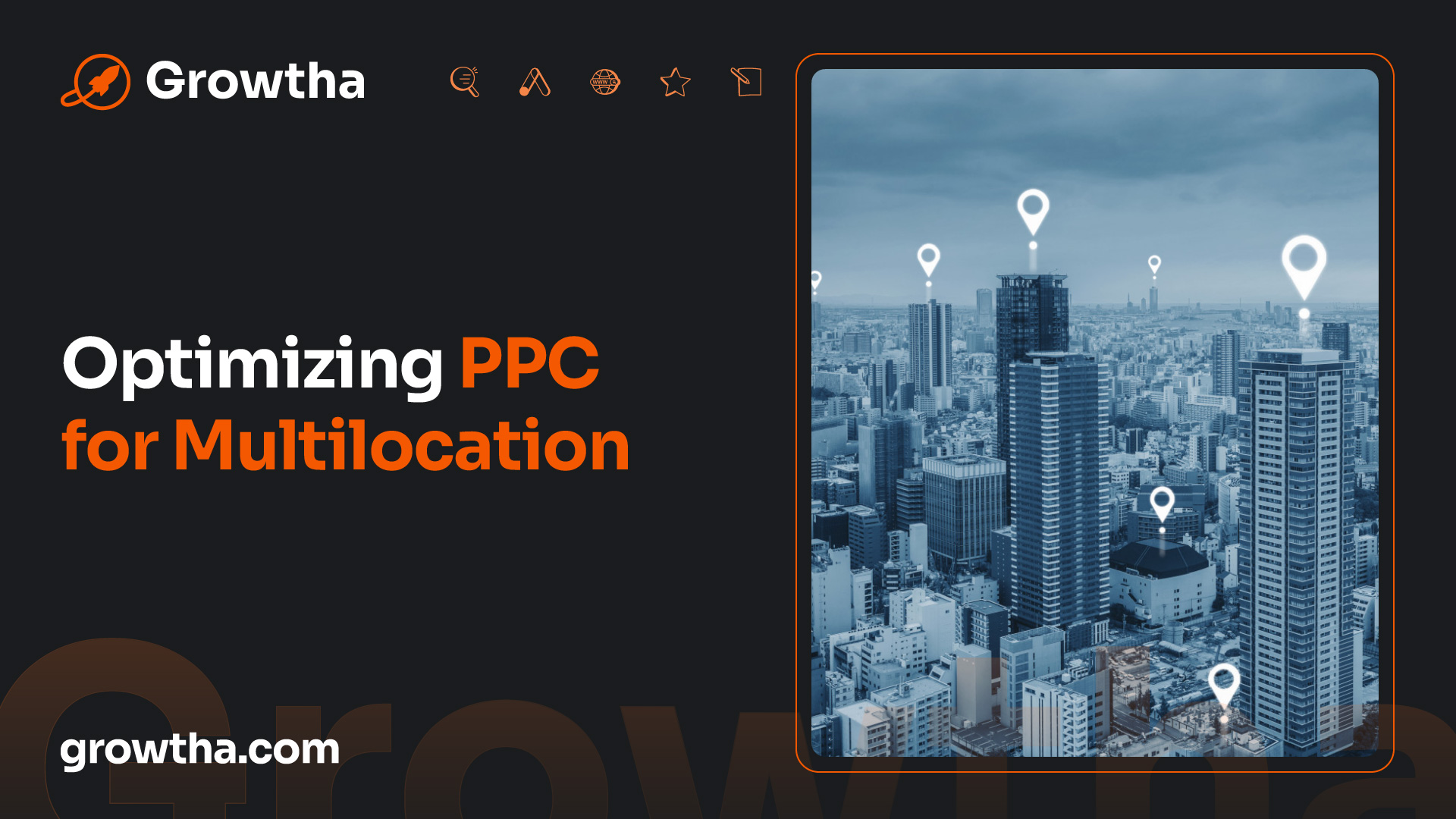To effectively optimize PPC (Pay-Per-Click) advertising for multilocation providers in the healthcare industry, it's crucial to have a solid understanding of the basics of PPC advertising and recognize the importance of this marketing strategy for healthcare providers.
PPC advertising is a digital marketing strategy that allows businesses and organizations to display ads on search engine results pages (SERPs) and other online platforms. With PPC, advertisers only pay when a user clicks on their ad, making it a cost-effective method for reaching a target audience.
In PPC advertising, keywords play a significant role. Advertisers bid on keywords relevant to their products, services, or industry. When a user searches for those keywords, the search engine displays the ads associated with them. Ad placement is typically based on a combination of bid amount and ad relevance.
The major search engines, like Google Ads, Bing Ads, and Yahoo Gemini, offer PPC advertising platforms that provide tools and features to manage campaigns, set budgets, and track performance.
PPC advertising is particularly important for healthcare providers, especially those with multiple locations. Here are some reasons why healthcare providers should prioritize PPC:
By understanding the basics of PPC advertising and recognizing its importance for healthcare providers, multilocation healthcare providers can unlock the power of PPC to reach their target audience, increase brand visibility, and achieve their marketing goals.

When it comes to healthcare providers with multiple locations, optimizing pay-per-click (PPC) advertising strategies is crucial for effective marketing and reaching a wider audience. This section will explore the unique challenges faced by multilocation providers in healthcare, as well as strategies for optimizing their PPC campaigns.
Multilocation providers in the healthcare industry refer to organizations that have multiple clinics, hospitals, or healthcare facilities spread across different geographical locations. These providers aim to serve a diverse patient base and expand their reach to attract new patients.
Managing PPC campaigns for multilocation providers in healthcare comes with its own set of challenges. Some common challenges include:
To optimize PPC campaigns for multilocation providers in healthcare, consider implementing the following strategies:
By implementing these strategies, multilocation healthcare providers can optimize their PPC campaigns to target specific locations, overcome challenges, and maximize their online visibility and patient acquisition efforts. It's important to regularly monitor and analyze the performance of each location's PPC campaigns to make data-driven optimizations and drive success across all locations.

When it comes to optimizing PPC (Pay-Per-Click) campaigns for multilocation healthcare providers, understanding key metrics is essential for measuring success and making data-driven decisions. By tracking and analyzing PPC performance, healthcare providers can gain valuable insights into the effectiveness of their campaigns and make necessary optimizations. Let's explore the key metrics for success in PPC campaigns.
To evaluate the performance of your PPC campaigns, you need to monitor and analyze various metrics. Here are some essential metrics to consider:
To effectively optimize your multilocation PPC campaigns, it's crucial to track and analyze the performance of your ads. Here's a step-by-step process:
By consistently tracking and analyzing PPC performance, healthcare providers can make data-driven optimizations to their multilocation campaigns. This allows for more effective targeting, improved ROI, and ultimately, better results in reaching and engaging with their target audience.
Creating compelling ad copy and designing effective landing pages are essential components of optimizing PPC campaigns for multilocation healthcare providers. These elements play a crucial role in attracting potential patients, driving conversions, and maximizing the return on investment (ROI) of your PPC efforts.
Crafting persuasive ad copy is key to capturing the attention of your target audience. When creating ad copy for multilocation healthcare providers, it's important to consider the specific services offered, the unique selling points of each location, and the needs and preferences of potential patients.
To create effective ad copy:
Remember, ad copy should be tailored to the target audience and aligned with the specific goals of each PPC campaign. Regularly test and optimize your ad copy by analyzing click-through rates (CTR) and conversion rates to identify what resonates most with your audience.
Once a user clicks on your ad, it's crucial to provide them with a seamless and engaging experience on the landing page. A well-designed landing page can significantly impact conversion rates and the overall success of your PPC campaign.
To design effective landing pages for multilocation providers in healthcare:
Regularly track and analyze the performance of your landing pages, paying attention to metrics such as bounce rate, time on page, and conversion rate. By identifying areas for improvement and conducting A/B testing, you can optimize your landing pages to maximize conversions and achieve your PPC goals.
Crafting compelling ad copy and designing effective landing pages are integral to the success of PPC campaigns for multilocation providers in the healthcare industry. By continuously refining these elements based on data-driven insights and user feedback, you can enhance the performance of your PPC campaigns and drive meaningful results.
To effectively optimize PPC campaigns for multilocation healthcare providers, it is crucial to integrate local SEO strategies. Local SEO helps target specific geographical areas and ensures that the PPC ads reach the right audience. In this section, we will explore the importance of local SEO for multilocation providers and discuss how to align PPC with local SEO strategies.
Local SEO plays a significant role in the success of multilocation healthcare providers. It helps them improve their visibility in local search results and attract patients in each specific location. By implementing local SEO practices, such as optimizing Google My Business profiles, creating location-specific landing pages, and building citations on local directories, healthcare providers can ensure that their PPC campaigns align with local search intent.
One essential aspect of local SEO for multilocation providers is consistent and accurate business information across all online platforms. This includes maintaining consistent NAP (name, address, phone number) data, ensuring that each location's information is up to date, and managing online reviews for each location. By optimizing local SEO, healthcare providers can enhance their online presence and increase the chances of appearing in relevant local search results.
To optimize PPC campaigns for multilocation providers, it is essential to align PPC efforts with local SEO strategies. Here are some key considerations:
By integrating local SEO strategies into PPC campaigns, multilocation healthcare providers can enhance their visibility in local search results and effectively target their desired audience. This integration ensures that PPC ads align with local search intent and maximize the impact of marketing efforts.
When implementing a PPC (Pay-Per-Click) advertising strategy for multilocation healthcare providers, proper budget allocation and measuring the return on investment (ROI) are essential. This section will explore the key considerations for budget allocation and effective ROI measurement for multilocation providers in the healthcare industry.
Determining the appropriate budget for PPC campaigns is crucial to ensure optimal results. The budget allocation should take into account various factors such as the size and reach of the multilocation healthcare provider, competition, target audience, and the specific goals of the PPC campaign.
To effectively allocate the budget, it's important to conduct thorough research and analysis. This includes identifying the target keywords and their associated costs, understanding the average cost per click (CPC) for the healthcare industry, and evaluating the estimated number of clicks required to achieve the desired results.
A common approach is to allocate a larger portion of the budget to higher-value services or locations that generate a significant return on investment. However, it is also important to allocate a portion of the budget to test new strategies and optimize underperforming locations or services.
Measuring the ROI of PPC campaigns is essential to evaluate the effectiveness of the advertising efforts and make data-driven decisions. ROI can be measured by comparing the revenue generated from the PPC campaigns to the total cost of the campaigns.
To accurately measure ROI for multilocation providers, it is important to track and attribute conversions accurately. This involves implementing proper tracking mechanisms, such as conversion tracking codes or call tracking, to identify the specific PPC campaigns or locations that generated the conversions.
In addition to revenue generated, other metrics such as click-through rates (CTR), cost per click (CPC), and conversion rates should be considered to gain a comprehensive understanding of the campaign's performance. These metrics can help identify areas for improvement and guide future budget allocation decisions.
It's important to regularly analyze the ROI data and make adjustments to the PPC campaigns based on the insights gained. This may involve reallocating budgets to high-performing campaigns or making strategic changes to underperforming campaigns.
By effectively allocating the budget and measuring the ROI of PPC campaigns, multilocation healthcare providers can optimize their advertising efforts, improve their marketing strategies, and achieve a higher return on investment for their PPC initiatives.
https://healthcaresuccess.com/blog/paid-search/ppc-for-multilocation-practices.html